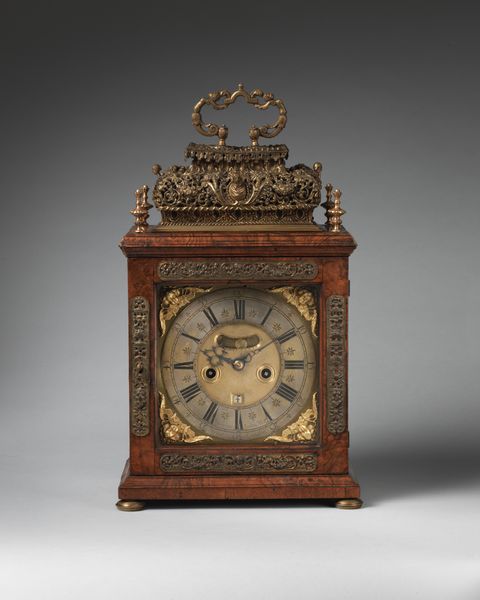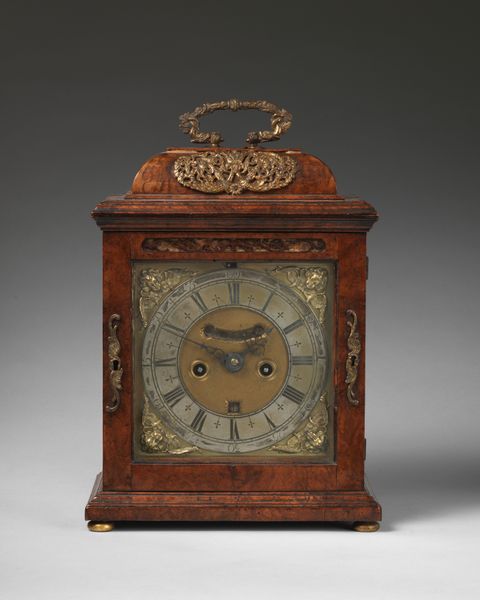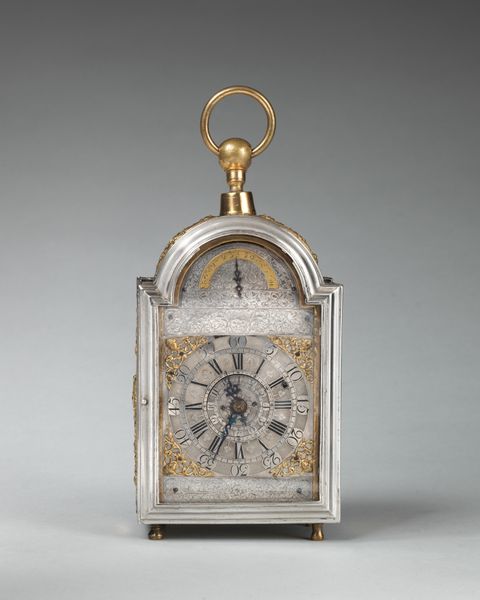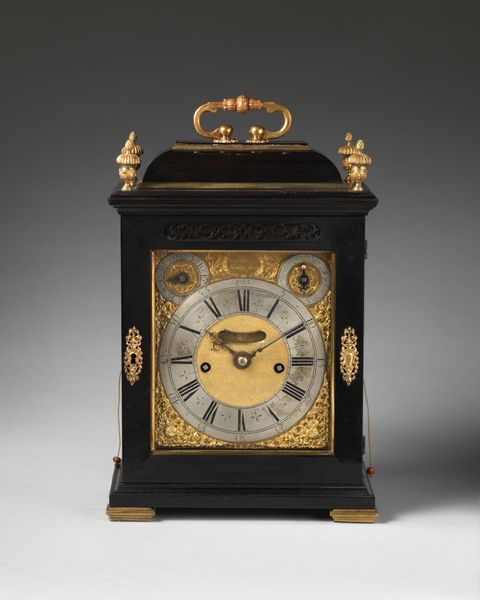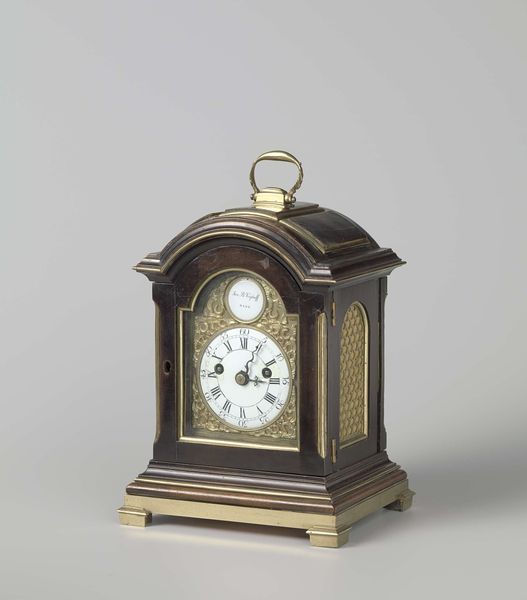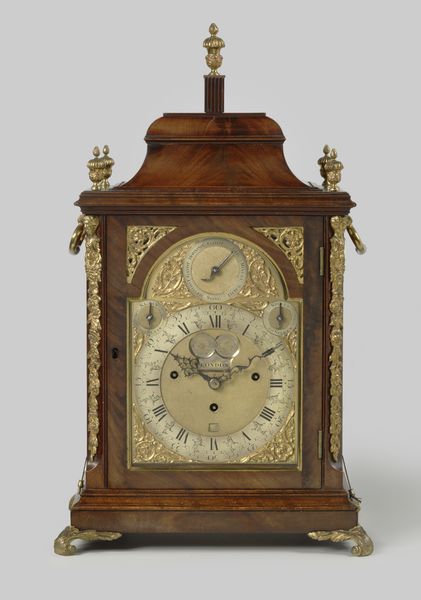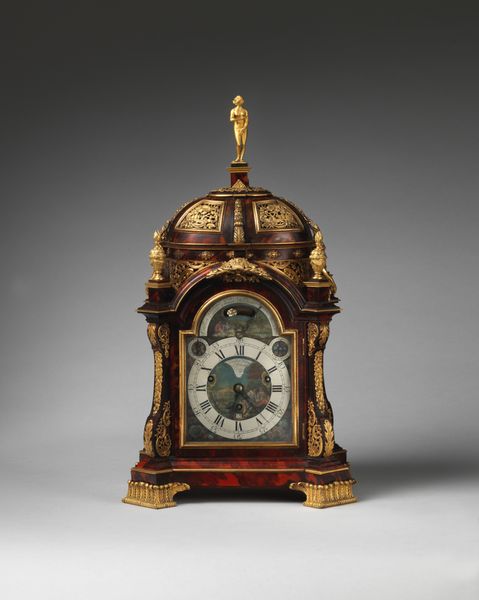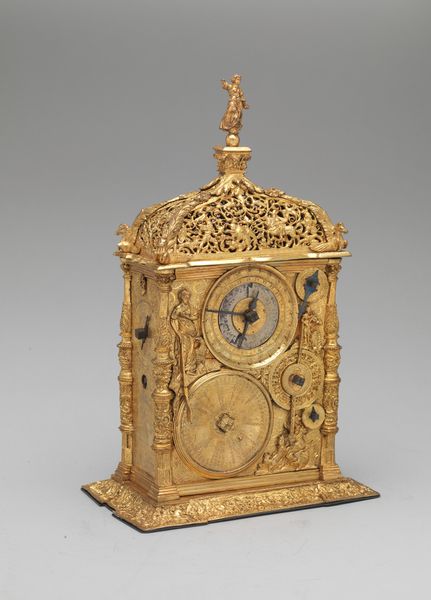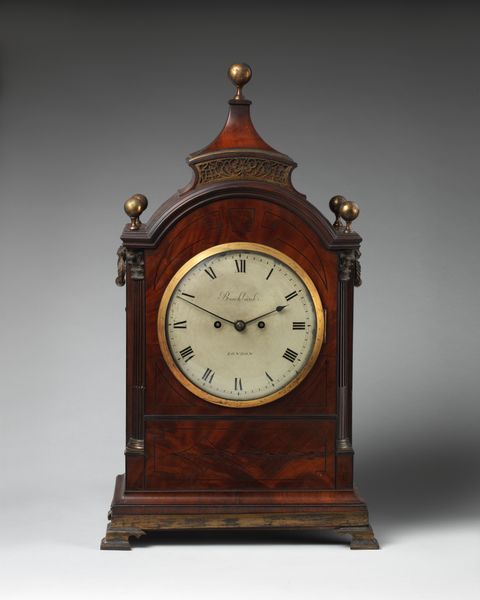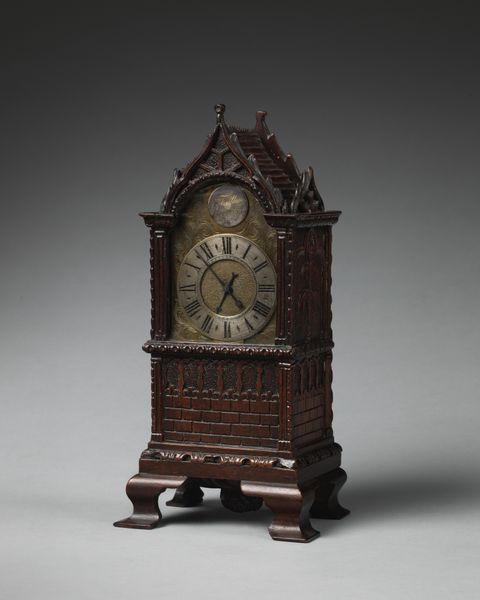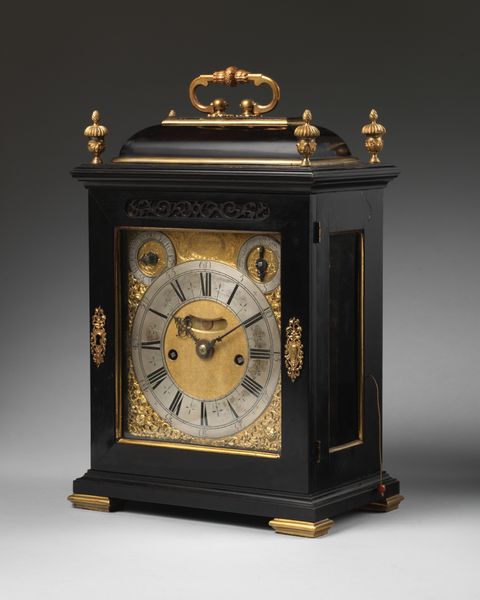
Dimensions: Overall: 8 3/4 × 5 1/2 × 4 5/16 in. (22.2 × 14 × 11 cm)
Copyright: Public Domain
Curator: Looking at this image, one is struck by its ornate character; this is a late 18th century table clock. It’s currently held at the Metropolitan Museum of Art, and we know it was produced by James Tregent in London between 1775 and 1785. It is crafted from a rich array of materials including wood, bronze and metal. Editor: The first thing I notice is the symmetry, the almost perfect balance of forms, though that rich wooden surface of the primary body really softens the potentially rigid geometry. I get a warm, inviting feeling from it, not cold and mechanical at all. Curator: The visual vocabulary of time is interesting here. Time as a golden cage! We are quite preoccupied with time, its passage. How intriguing that such a potentially fearful notion is presented so attractively. The decorative flourishes surrounding the face of the clock don’t diminish the symbolic impact, and one could certainly discuss the Freudian readings, too, with time represented by a prominent and somewhat dominating, phallic object! Editor: It is incredibly well-balanced between functionality and decoration. That elaborate metalwork set against the dark wood creates visual tension. Note how the eye is drawn to the circular clock face, framed by delicate, gilded details which are so typically Baroque, but there’s an unmistakable neoclassical restraint here as well. Curator: Time, I think, represented in the image as a highly valuable possession, but something from which there's a distance—it sits under glass. This would have been the concern of the upper classes who had time and leisure to measure and display its passing. And the golden handle implies the ability to seize time—to physically control it. That golden ornamentation brings status and visual worthiness, adding the component of social identity into its narrative. Editor: Absolutely. Thinking about how these Baroque and decorative art traditions were repurposed and reshaped by social elites, one observes that it certainly served as a visual reinforcement of hierarchical class and economic divisions, no? Curator: Undeniably. The aesthetic enjoyment that we derive from it now is filtered through these social historical understandings. What appears decorative and visually pleasing is laden with cultural memory. Editor: A great reminder of how our relationship with objects constantly evolves, changing our understanding and perceptions over time. Curator: Precisely, so as we consider our place within its timeline we invite the listener to step away from the object with renewed insight into their present, their social narratives, and to go forward more thoughtfully than before.
Comments
No comments
Be the first to comment and join the conversation on the ultimate creative platform.
